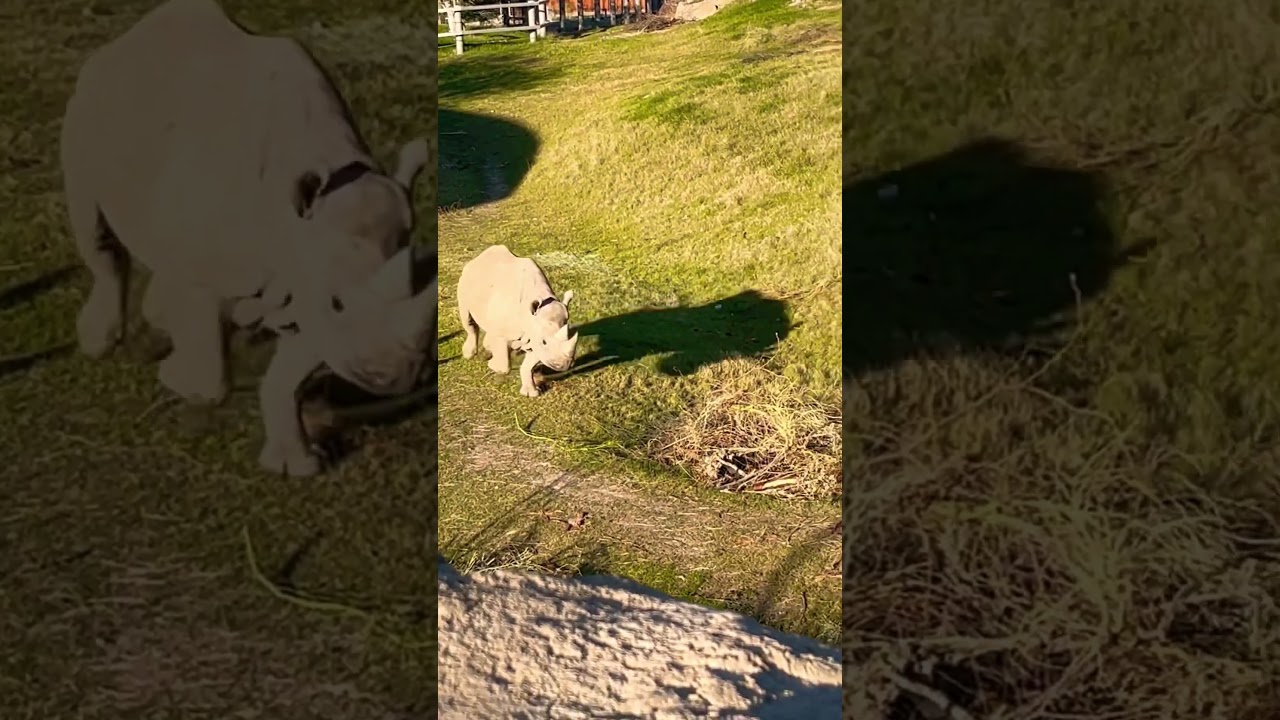– Understanding the phenomenon of “zoomies” in black rhinos, specifically in Nia
– Exploring the implications of zoomies for rhino behavior and welfare in captivity
– Highlighting the role of zoomies in public engagement and wildlife conservation efforts
– Analyzing challenges and strategies in managing large mammals like rhinos in zoological settings
– Discussing the significance of video documentation in scientific research and public education on endangered species
Zoomies, often characterized by sudden bursts of energy leading to playful running and cavorting, are not exclusive to domestic pets but are also observed in large mammal species, including black rhinos like Nia. While entertaining to onlookers, this behavior provides significant insights into the physical and psychological well-being of these majestic creatures in captivity. By dissecting instances of Nia exhibiting zoomies, this article offers a comprehensive exploration into the multifaceted aspects of large mammal behavior, enclosure design, conservation efforts, and the powerful role of visual media in fostering a connection between humans and endangered species.
Observing zoomies in an animal like Nia signifies a peak in physical health and emotional contentment. In the wild, black rhinos are known for their solitary and sometimes aggressive behavior, with large territories allowing extensive movement and activity. Captured effectively in videos, zoomies in a creature such as Nia indicate the successful simulation of a naturalistic environment within a captive setting. These behaviors are critical in assessment metrics for animal welfare in zoos and wildlife parks, as they indicate an environment that fulfills the rhino’s complex behavioral needs.
Such documentation serves as a delightful insight into the personality of creatures like Nia and an educational tool emphasizing the importance of physical exercise and environmental enrichment in captive animal care. Zoos and conservation parks invest heavily in creating habitats that stimulate natural behaviors, including the occasional burst of energy seen in zoomies. This approach to enclosure design reflects a deep understanding of the species’ natural history and behavioral ecology, ensuring spaces that cater to their physical and psychological needs.
Furthermore, the role of zoomies extends beyond animal welfare to impact conservation messaging and public engagement. Videos and stories of Nia’s zoomies resonate with audiences, bridging the gap between scientific conservation work and public awareness. They humanize the plight of the black rhino, an iconic species facing critical threats from poaching and habitat loss. By capturing viewers’ hearts, these moments of joy and playfulness can mobilize support for conservation initiatives, funding, and policy change.
However, managing large mammals like black rhinos in captivity presents many challenges, from dietary needs to socialization and the spatial requisites to encourage natural behaviors like zoomies. Zoological settings must balance safety, health, and natural behavior stimulation to maintain the overall well-being of their charges. The management strategies developed to nurture these aspects involve a collaborative effort amongst veterinarians, animal behaviorists, and facilities designers. Their work is pivotal in creating spaces that allow for but encourage behaviors indicative of a high quality of life, such as zoomies.
Lastly, the significance of video documentation in these scenarios cannot be overstated. As witnessed with Nia’s zoomies, visual media play a crucial role in the scientific study of animal behavior, public education, and advocacy for conservation. They provide undeniable evidence of the emotional and physical states of animals in captivity, reminding them of the dynamic personalities behind the species label. Video captures serve as valuable records for behavioral studies and as engaging educational material that can inspire a wider audience to participate in conservation efforts.
In studies of animal behavior and welfare, particularly for species at risk like the black rhino, observing and understanding behaviors such as zoomies become essential. These moments provide invaluable insights into the animal’s well-being and the effectiveness of their management in captivity. Through strategic habitat design, focused conservation efforts, and the judicious use of video documentation, zoological institutions can contribute significantly to the understanding and preservation of these majestic animals. Nia’s zoomies are more than just moments of amusement; they are a powerful testament to the success of comprehensive animal care programs and the enduring spirit of species conservation.
*****
Source Description

